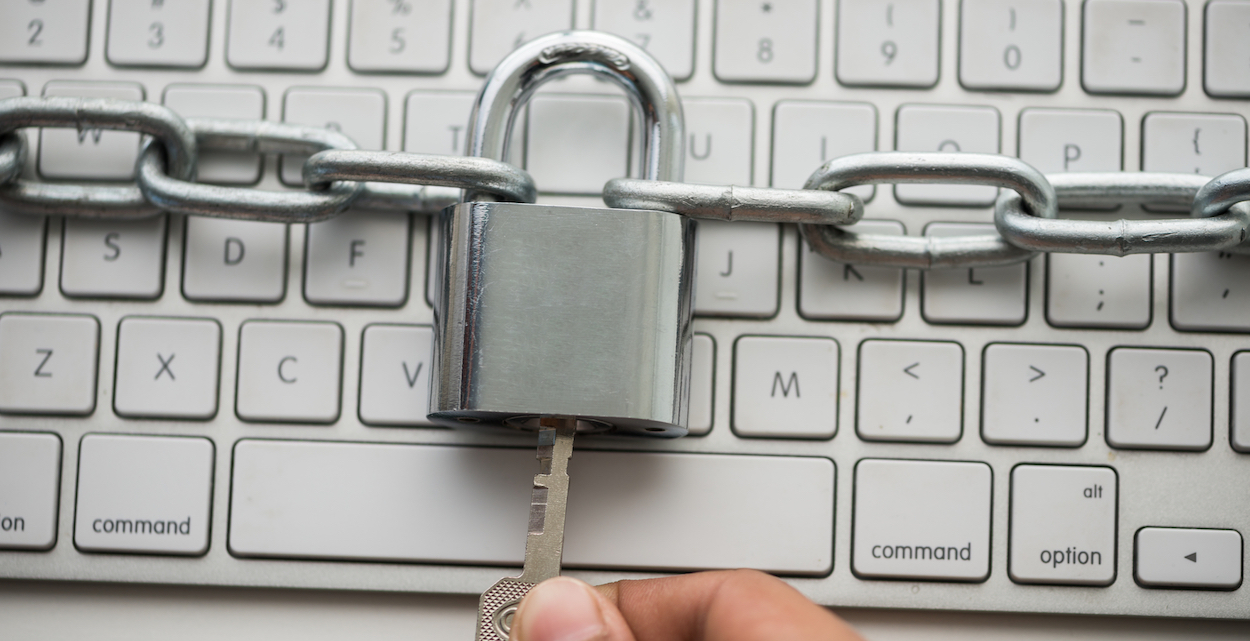If you’re in the bad habit of walking away from your Mac and leaving it unlocked, then you’re running the risk of other people accessing your Mac in your absence.
Hopefully, the worst that’ll happen is some practical joker updates your Facebook status or changes your Desktop wallpaper, but in the worst case scenario someone could go snooping through your files, accessing sensitive data and maybe even modifying your Mac’s contents without your consent.
Although your Mac will lock automatically whenever you close the lid, for increased security you should try and get into the habit of locking your Mac every time you step away from it.
There’s various ways that you can lock your Mac, ranging from using a keyboard shortcut, to configuring a hot corner or, if you’re lucky enough to own one of the new MacBook Pros, you can even add a Lock button to your Touchbar.
In this article I’m going to be sharing various techniques that you can use to lock your Mac quickly and easily, so you can select the method (or methods) that work the best for you.
1. Lock your Mac Automatically
Ideally, you should get into the habit of manually locking your Mac whenever you’re leaving it for a significant period of time. However, it’s still a good idea to setup your Mac so it goes to sleep and then locks automatically after it’s been sat idle for a while, as this can be a useful fallback for those occasions when you do forget to lock your Mac.
You can configure your Mac to either lock automatically as soon as it enters a sleep state, or you can specify that your Mac should wait for a certain period of time before triggering the lock function. The latter can be useful if your Mac occasionally drifts off to sleep even when you’re sat right in front of it – you probably don’t want to have to keep unlocking your Mac, just because you were lost in thought and accidentally let your Mac doze off as a result!
To setup your Mac to lock automatically:
- Click the ‘Apple’ logo in the toolbar and select ‘System preferences…’
- Select the ‘Security & Privacy’ pane.
- Make sure the ‘General’ tab is selected.
- Select the ‘Require Password’ checkbox. If you don’t already have a password in place, then follow the onscreen instructions to create one.
- Use the accompanying dropdown to specify how long your Mac should wait after entering a sleep state.
- Make sure the ‘Disable Automatic Login’ checkbox is selected.
You may also want to check how long your Mac needs to be stood idle for, before it’ll go to sleep, so navigate back to the main ‘System Preferences….’ screen and select ‘Energy Saver.’ Take a look at the timeline in both the ‘Battery’ and ‘Power Adapter’ tabs, and make any necessary adjustments.
2. Lock Your Mac With a Keyboard Shortcut
Technically, you can only send your Mac to sleep using a keyboard shortcut, but if you’ve configured your Mac to lock as soon as it enters sleep mode, then this is essentially the same as locking the screen. Even if you’ve specified that your Mac should sleep for a set period of time before locking, this shortcut may still be useful depending on exactly how long your Mac needs to wait before the locking mechanism is triggered.
To send your Mac to sleep, press the ‘Control+Shift+Power’ keys. If you have an older MacBook that doesn’t feature the ‘Power’ button as an actual keyboard key, then you can send your Mac to sleep using the ‘Control+Shift+Eject’ shortcut instead.
3. Lock Your Screen From the Menu Bar
You can also add a ‘Lock Screen’ icon to your Mac’s toolbar:
- Open a ‘Finder’ window and navigate to ‘Applications > Utilities > Keychain Access.’
- Select ‘Keychain Access’ from the toolbar, followed by ‘Preferences…’
- Select the ‘Show keychain status in menu bar’ checkbox.
A padlock icon will appear in your Mac’s toolbar; click this icon to open a dropdown menu containing various options, including a ‘Lock screen’ option.
![]()
4. Lock Your Mac Using Hot Corners
Hot corners are a bit of a divisive topic amongst the Mac community, with some users appearing to hate this feature.
If you’ve never experimented with hot corners before, then they allow you to assign an action to each corner of the screen. You can then trigger these actions by moving your mouse to the corresponding corner. While this can be a useful productivity feature, it’s frustrating if you keep activating a hot corner by accident, which is a big part of why some Mac users seem to dislike hot corners so much.
To create a hot corner that’ll send your screen to sleep whenever it’s triggered:
- Navigate to ‘System preferences > Mission Control.’
- Click the ‘Hot Corners…’ button.
- Open one of the four dropdown menus, and set it to ‘Put Display to Sleep.’

- Save your changes by clicking ‘OK.’
You can now send your Mac to sleep by moving your mouse to this particular corner, at which point your Mac will either lock immediately, or it’ll lock after a period of time, depending on your settings.
If you try this feature and decide that hot corners aren’t for you, then you can deactivate them by navigating back to ‘System preferences > Mission Control > Hot Corners,’ opening the corresponding dropdown menu and setting it to ‘-.’
5. Lock your Mac Using the Touchbar
If you own one of the new MacBook Pros, then you can add a ‘Lock’ button to the Touchbar:
- Open your Mac’s ‘System preferences…’
- Select the ‘Keyboard’ pane.
- Click the ‘Customize Control Strip….’ button.
- In the subsequent window, find the ‘Lock Screen’ button and drag it onto your Toolbar.






Add Comment